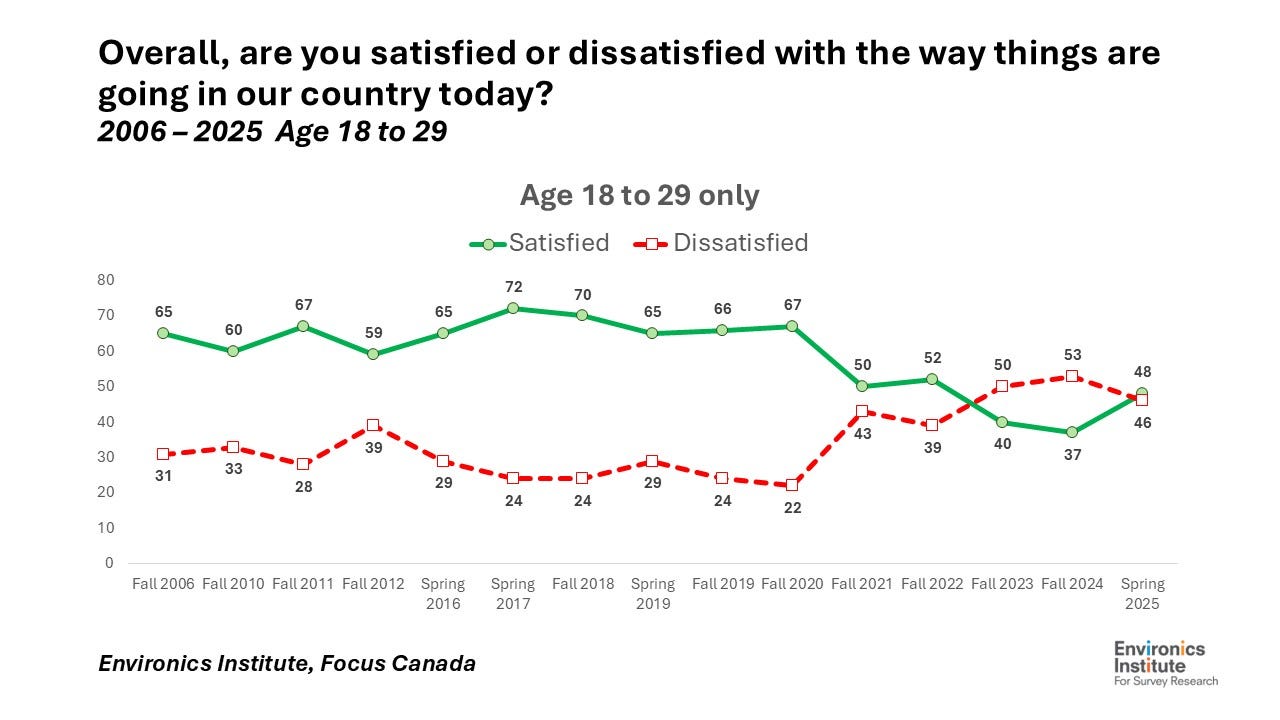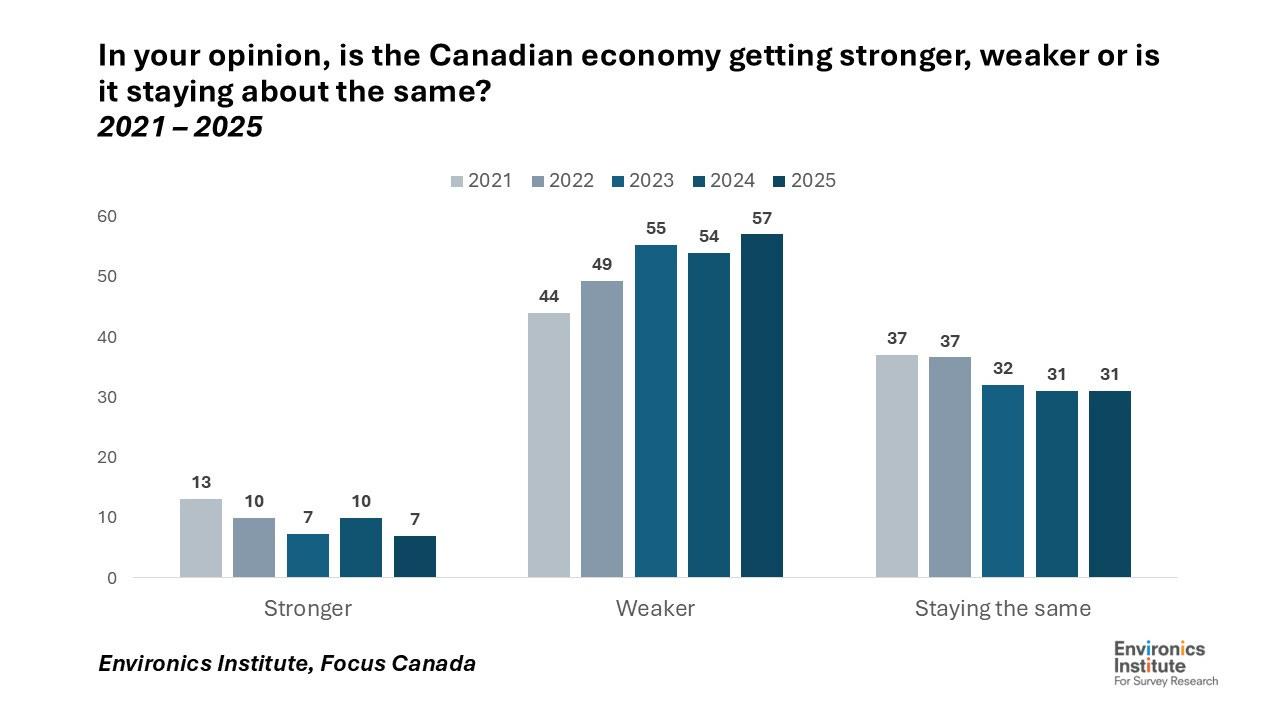Satisfied or dissatisfied? A post-election update
The overall mood improves despite worries about the economy
Last fall, I documented the souring public mood in Canada by sharing the results of our survey question about “satisfaction.” This question asks: overall, are you satisfied or dissatisfied with the way things are going in our country today?
Here’s what we found in the fall of 2024:
“Dissatisfaction has increased by 24 percentage points over a short three-year period, from a low of 34 percent in 2020 to a high of 58 percent in 2023 – and it remains almost as high today.”
That was then. What does it look like now – after several months of political change, culminating in the April federal election? Are Canadians feeling any more satisfied with “the way things are going in our country today” after the election and the change of prime minister than they were before it?
The answer: yes, a little. But, despite a modest rebound, Canadians remain a little more likely to be dissatisfied than satisfied about the direction of the country.
Here’s the updated trend:
The downward trend has been reversed. Satisfaction rose by nine percentage points, from 35 percent to 44 percent, between the fall of 2024 and the spring of 2025.1 This rebound just about brings us back to where we were in 2021 and 2022.
Satisfaction is up compared to last fall in every part of the country. The gains have been more modest in Quebec (up 5 percentage points) and Alberta (+6 pts), and more dramatic in B.C. (+11 pts), the Atlantic provinces (+13 pts) and Manitoba/Saskatchewan (+17 pts). Quebecers remain the most likely to be satisfied with the way things are going in the country; Albertans are now the least likely to be satisfied. Dissatisfaction still outweighs satisfaction in every part of the country except Quebec and B.C.
Satisfaction is also up compared to last fall among all age groups, but more among the oldest (+ 12 pts) and the youngest (+11 pts) groups, and less among those in the middle. Satisfaction outweighs dissatisfaction both among those age 18 to 29 and among those age 60 and older, but just by a statistically insignificant sliver. Majorities of those age 30 to 44 and 45 to 59 remain dissatisfied with the way things are going in the country.
It’s encouraging to see the end of the trend of eroding satisfaction among the youngest cohort of adults in Canada. Nonetheless, their level of satisfaction remains much lower than it was just five years ago. Among the next oldest cohort, those age 30 to 44, satisfaction remains 27 points lower than it was in 2017 (a drop from 66% to 39%).
It’s notable that satisfaction levels by federal party support have hardly shifted at all since last fall.2 Supporters of the Liberal Party remain much more likely to be satisfied than Conservative Party supporters. What has changed, of course, is that there are significantly more people inclined to support the Liberal Party today than six or so months ago.
It’s no surprise that the mood of Conservative Party supporters has hardly improved following the April election. In the coming months and years, an interesting way to gauge whether the new prime minister lives up to his promise will be to watch whether satisfaction among Conservative Party supporters starts to float upwards, or whether instead the much higher level of satisfaction expressed by Liberal Party supporters starts to decline.
Finally, we can add some additional context by looking at the results of a second question, which asks about the state of the economy. If satisfaction with the direction of the country has improved somewhat over the past few months, it’s not because Canadians are feeling better about the economy. In fact, the proportion who say the economy is getting weaker has even creeped up a bit, to 57 percent – the highest proportion since this question was placed back in the survey in 2021. This result should caution us not to overstate the extent to which the overall public mood in Canada has improved.
The data in this post are from the Environics Institute’s Focus Canada surveys; details of the methodology of all our surveys are available on our website. The Spring 2025 survey is based on telephone interviews conducted (via landline and cellphones) with 2,000 Canadians between May 5 and 18, 2025. A sample of this size drawn from the population produces results accurate to within plus or minus 2.2 percentage points in 19 out of 20 samples.
What is the Environics Institute for Survey Research? Find out by clicking here.
Follow us on other platforms:
Bluesky: @parkinac.bsky.social
Twitter: @Environics_Inst or @parkinac
Instagram and Threads: environics.institute
Cover photo credit: Aswin R S
As yet unpublished results from other surveys conducted earlier this year lead me to be confident in asserting that the change occurred only recently, in April and May.
Note that the May 2025 survey question asked about vote choice in the April 28th election, rather than vote intention.










Good baseline to assess Carney government a year from now. Suspect degree to which economy is perceived to have improved (hard in the context of Trump) will have stronger linkage than currently.